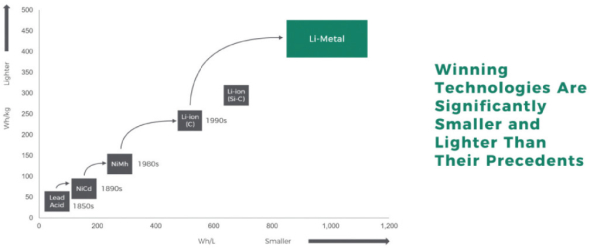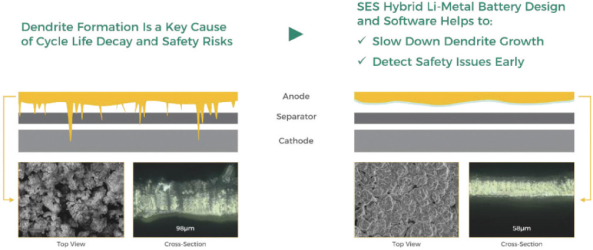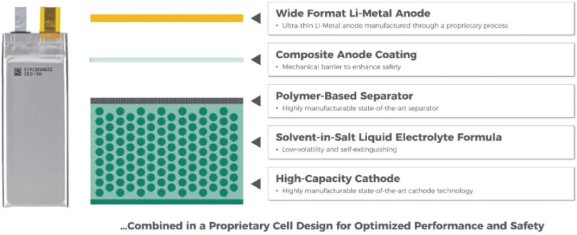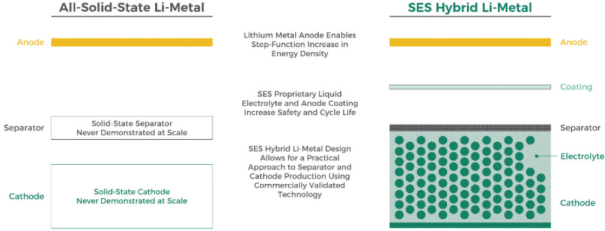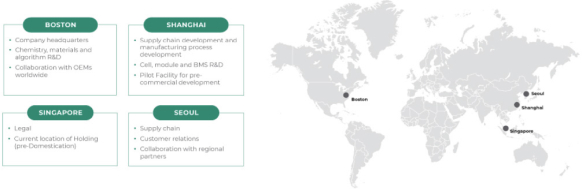Our Technology
We believe that SES
Li-Metal
is the next generation battery technology for EVs. Our unique approach to Li-Metal
is designed to deliver high energy density batteries and high manufacturability at the same time. The unique and differentiated design of our Li-Metal
battery, enabled by advanced, proprietary and patented materials and software breakthrough, gives us the confidence that SES will be able to deliver batteries to its customers at scale while matching or exceeding their expectations on performance, safety and cost. 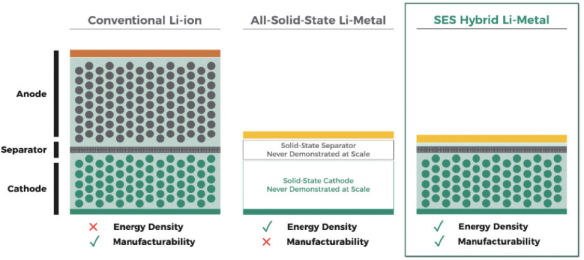
Conventional
Li-ion
technology is currently being used in most commercially available EVs. Li-ion
typically uses a metal oxide-based or phosphate-based cathode, and graphite or graphite/silicon-based anodes. The anode and cathode are separated by a polymer-based separator. Finally, the whole cell is filled with a liquid electrolyte that conducts lithium ions from anode to cathode as the vehicle is being driven (or battery is being discharged), and from cathode to anode as the vehicle (or the battery) is being charged. Conventional Li-ion
cells have been instrumental in kick starting the current EV market, and are being manufactured at scale at capacities of hundreds of GWh today. However, the automotive industry and its customers are yearning for a battery with higher energy density to improve the electric driving range (the distance that a vehicle can be driven on a single charge) while reducing battery cost to enable mass-adoption. Li-Metal
is widely considered and accepted as the EV battery technology capable of achieving the highest energy density. In fact, switching the current Li-ion
graphite/silicon anode with Li-Metal
will currently result in the highest possible energy density for any given cathode in lithium chemistry. Lithium metal is the lightest unengineered pure metal on earth. Also, since the lithium ions do not have to diffuse in and out of the anode host material (like in the case of graphite or silicon in conventional Li-ion),
the battery cells made with lithium metal anode can be very compact and light. This combination of lightweight and compact anode results in the highest possible gravimetric (Watt-hour (“Wh”)/kg) and volumetric (Wh/liter) energy density, respectively, for any given cathode in lithium chemistry. 58
